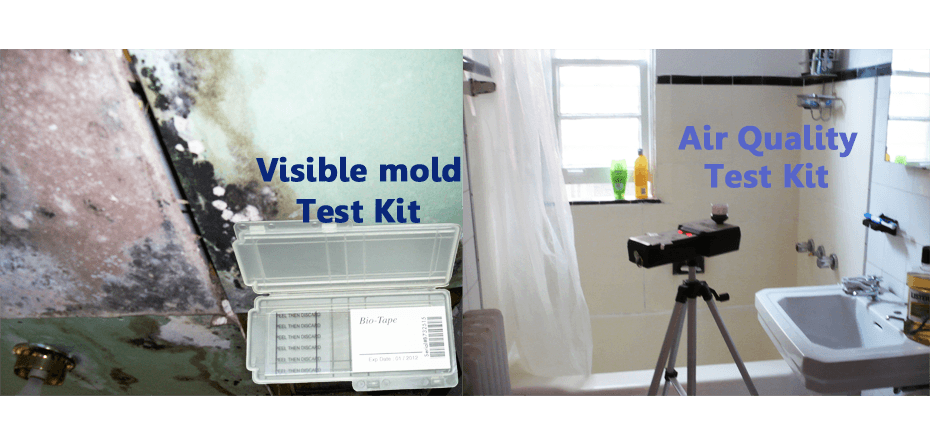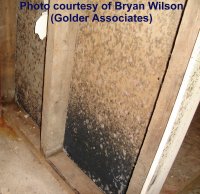
You can detect black mildew on basement walls and ceilings visually and/or by musty or moldy smell. Eliminating black mildew completely is hard because basements are damp most of the times. The mildew spores will not grow if moisture is not present. The basement and the attic are the two most common areas of household mildew problems. Though we use the term mildew throughout this article, there is no difference between mold and mildew. Mold and mildew are the same thing.
Cause of Mildew Growth in the Basement
Mildew or mold grows on natural and damp organic materials and can begin to grow in as little as 24-48 hours after water gets into contact with these materials. The cause of dampness could be flooding, water leaks, and higher levels of humidity. Poor ventilation is the main reason basements are always damp and more susceptible to mildew growth than other places in the house.
Almost every home has some type of mildew either in the basement, bathroom or the attic. Mildew can also grow in hidden places such as inside the wall cavity, behind the cabinets, bookshelves or other furniture placed against the wall.
Some types of mildews are indicators of very wet basements. These mildew (also known as moisture indicator fungi) include Stachybotrys (black mold), Chaetomium, Ulocladium, and Fusarium.

Health Effects of Mildew
As mentioned earlier, there is no difference between mold and mildew. It is just another name for mold. Therefore, health effects associated with mildew are the same as those of the mold. Mildew reproduces by forming spores that are generally not visible to the unaided eye. The spores are airborne allergens like pollen and they are easily transmitted by wind currents. If spores find their way into the human respiratory system, they can cause disease and aggravate allergy symptoms in those people who are sensitive to mold. They can experience severe health problems such as asthma and bronchitis. Actively growing mildew can spread throughout the entire home producing more and more spores. Spore exposure is primarily through inhalation but may also occur through ingestion and skin contact.
Black Mildew and Dust Mites
Just like black mildew, dust mites thrive in damp environments. In dry environment mites lay dormant until favorable moist conditions allow them to thrive again. Dust mites produce allergy causing fecal material, which they release into the air. The mites are microscope bugs that feed mostly on dead skin cells from human and animals. The mites live in places like mattresses, pillows, bed-covers, carpets, stuffed toys, furniture, and clothes. You can control dust mites by eliminating moisture from the basement.
Black Mildew Removal and Control
Once you notice black mildew growth in your basement, you should consider removal. Mildew removal does not have to be expensive unless the basement is extensively infested. The key to controlling mildew growth is to keep the basement as dry as possible by using dehumidifiers or other means. The source of moisture whether it is a leak or failed building structure should be fixed. The most important factor in mildew removal is to have the source of moisture identified and fixed. Once the source of moisture is identified and fixed and the place is completely dry, mildew will not grow. Ventilation is also important. Poor ventilation cause accumulation of moisture and later mildew growth.
Black mildew removal and control in your basement is very important because the spores in the basement can easily spread to other parts of your home thus contaminating the house. Do not attempt mildew removal on your own if the mildew growth covers more than 10 square feet. In order to completely remove the spores from the basement area the first step is to sort out the items being stored in the affected area. Ensure all contaminated materials that cannot be cleaned are removed and new materials installed. Household items located in areas contaminated with mildew should be HEPA vacuumed even if they do not have visible mildew to remove any settled spores.





Leave a Reply
You must be logged in to post a comment.